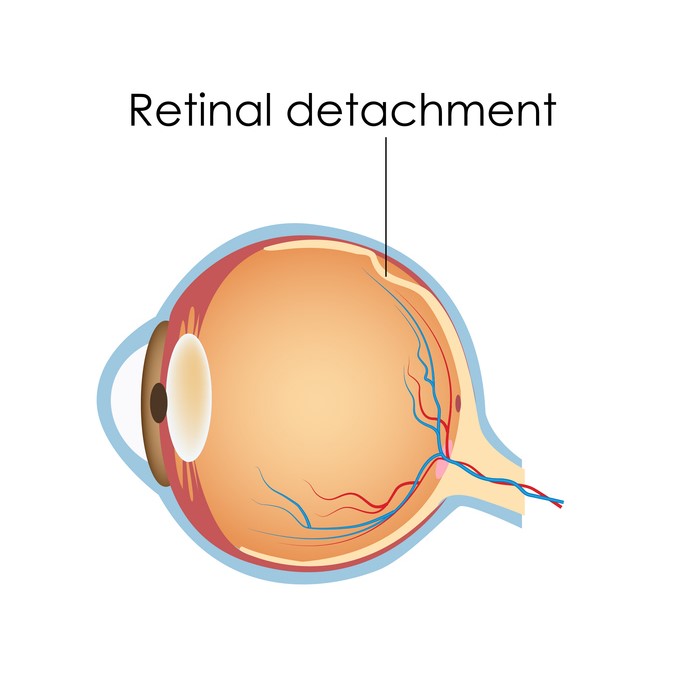What is a Retinal Detachment?
A “retinal detachment” describes an emergency situation in which a thin layer of tissue (the retina) at the back of the eye pulls away from its normal position.
Retinal detachment separates the retinal cells from the layer of blood vessels that provides oxygen and nourishment to the eye. The longer retinal detachment goes untreated, the greater your risk of permanent vision loss in the affected eye.
Warning signs of retinal detachment may include one or all of the following: reduced vision and the sudden appearance of floaters and flashes of light. Contacting an eye specialist right away can help save your vision.


What are Retinal Holes & Tears?
Retinal holes and tears are types of retinal conditions and are diagnosed as small breaks in the retina. Usually, holes and tears don’t immediately result in serious vision problems. However, retinal holes and tears may cause problems if fluid seeps behind the retina.
Fluid builds up behind the retina, can cause the retina to separate from the wall of the eye, damaging part of the retina.
Retinal holes and tears are urgent retinal diseases that can lead to total blindness.
What are the symptoms?
A retinal detachment itself is painless. But warning signs almost always appear before it occurs or has advanced, such as:
- The sudden appearance of many floaters — tiny specks that seem to drift through your field of vision
- Flashes of light in one or both eyes (photopsia)
- Blurred vision
- Gradually reduced side (peripheral) vision
- A curtain-like shadow over your field of vision
Seek immediate medical attention if you are experiencing the signs or symptoms of retinal detachment. Retinal detachment is a medical emergency in which you can permanently lose your vision.



















































































































